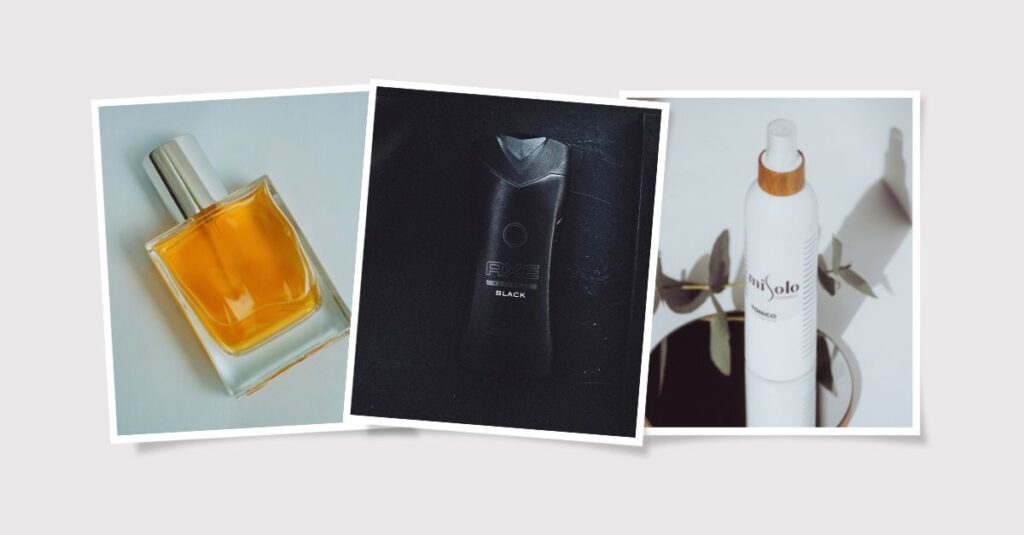Attention Ladies: Are You Washing Your Bra Enough? Find Out Now!
Introduction
Attention ladies, it’s time to address a vital aspect of your wardrobe that often goes unnoticed: your bras. We all know the importance of clean clothes, but when it comes to bras, are you washing them enough? It’s a question many of us overlook in our busy lives, but the truth is, proper bra hygiene is crucial for both comfort and health.
In this eye-opening article, we dive into the world of bra washing and reveal the shocking truth behind how often you should really be cleaning your intimate garments. Prepare to have your assumptions challenged as we uncover the secrets to maintaining fresh and hygienic bras.
From everyday bras to sports bras and those special occasion favorites, we’ll provide expert insights and guidelines to help you determine the right washing frequency for different types of bras. You’ll learn to identify the signs that indicate it’s time for a wash and discover practical tips for extending the time between washes.
Don’t miss out on this essential knowledge that could revolutionize your bra care routine. Get ready to make informed decisions about your bra hygiene – it’s time to find out if you’re washing your bra enough.
-
Importance of Proper Bra Hygiene

Before we delve into the specifics of bra washing frequency, let’s understand why it’s crucial to maintain proper bra hygiene. Your bra is in direct contact with one of the most sensitive parts of your body, and neglecting its cleanliness can have implications for both comfort and health.
Firstly, regular washing helps to remove accumulated sweat, dirt, and body oils that can cling to the fabric over time. These substances not only lead to unpleasant odors but also create an ideal breeding ground for bacteria, which can potentially cause skin irritations, rashes, or infections.
Secondly, washing your bra regularly ensures that it maintains its elasticity and shape. The accumulation of sweat and oils can weaken the fabric and stretch out the elastic, resulting in an ill-fitting bra that offers inadequate support.
Lastly, clean bras simply feel better against your skin. Wearing a fresh, clean bra can boost your comfort and confidence throughout the day, allowing you to focus on the tasks at hand without any unnecessary distractions.
-
Factors to Consider
Determining the appropriate frequency for washing your bras depends on several factors. Let’s explore these factors to help you make an informed decision about your bra care routine.
A. Personal Hygiene and Comfort
Personal hygiene habits vary from person to person. Some individuals naturally perspire more than others, and factors such as body odor and skin sensitivity can also play a role. If you tend to sweat heavily or have a more sensitive skin type, you may want to consider washing your bras more frequently.
Moreover, your comfort level is another essential consideration. If wearing a slightly worn bra for a second day doesn’t bother you and you feel comfortable, it might be acceptable to extend the time between washes.
B. Activity Level and Sweat Production
Consider your daily activities and how much you sweat during the day. If you engage in intense workouts, physical activities, or live in a hot and humid climate, your bras are likely to accumulate more sweat and require more frequent washing. Sweat can lead to unpleasant odors and create a moist environment that promotes bacterial growth.
C. Climate and Weather Conditions
The climate and weather conditions in your area can also influence the frequency of bra washing. In hot and humid climates, where sweat production is generally higher, you may need to wash your bras more frequently to maintain freshness. On the other hand, in cooler or drier climates, you might be able to stretch the time between washes.
D. Type of Bra Material
Different bra materials require different care routines. For example, bras made of delicate lace or silk may need to be treated with extra care and washed more gently, while bras made of sturdier materials like cotton or polyester may withstand more frequent washing. Always check the care instructions provided by the manufacturer to ensure you’re following the proper washing guidelines for the specific material of your bras.
-
General Guidelines for Bra Washing
While there isn’t a one-size-fits-all answer to how often you should wash your bras, here are some general guidelines based on the type of bra:
A. Everyday Bras:
For bras worn on a daily basis, it’s generally recommended to wash them after every two to three wears. This ensures that sweat, dirt, and oils are adequately removed, maintaining freshness and hygiene. However, if you perspire heavily or engage in activities that cause increased sweating, consider washing them more frequently.
B. Sports Bras:
Sports bras are subject to intense physical activity and often experience higher sweat levels. As a result, they should be washed after each use. Sweaty sports bras can develop a foul smell and may harbor bacteria if not cleaned promptly.
C. Special Occasion Bras:
Bras reserved for special occasions, such as fancy events or date nights, are typically worn for shorter durations and experience less sweat and dirt buildup. Washing them after every three to five wears is usually sufficient. However, if you notice any stains or odors, it’s best to wash them sooner.
It’s important to note that these guidelines are not set in stone and should be adjusted based on your personal circumstances and preferences.
-
Signs that Indicate it’s Time to Wash Your Bra
In addition to the recommended guidelines, there are certain signs you can look out for to determine when it’s time to wash your bra:
- Odor: If your bra develops an unpleasant or lingering odor, even after a short duration of wear, it’s a clear indication that it needs a thorough cleaning.
- Stains: Visible stains on your bra, such as sweat marks or food spills, should be addressed promptly. Ignoring stains can lead to discoloration and make them more challenging to remove later.
- Physical discomfort: If your bra feels uncomfortable, itchy, or irritates your skin, it might be a sign that it needs to be washed. Sweat, dirt, and oils can accumulate in the fabric and cause skin reactions or discomfort.
- Elasticity loss: If you notice that the elastic bands of your bra have become loose or stretched out, it’s a sign that frequent washing is necessary to restore its shape and support.
-
Tips for Extending the Time Between Washes
If you’re looking to extend the time between washes without compromising hygiene, consider the following tips:
- Rotate your bras: Owning multiple bras and rotating their usage allows each bra to “rest” and regain its shape while giving you more time between washes.
- Use bra liners: Bra liners or inserts can help absorb sweat and prevent direct contact between your skin and the bra fabric, reducing the need for frequent washing.
- Spot clean: For minor stains or localized areas that require cleaning, spot cleaning with a gentle detergent and water can be effective. This helps to address specific areas without subjecting the entire bra to a full wash.
- Air out your bras: After each wear, hang your bras in a well-ventilated area to allow them to air out. This helps to reduce odors and moisture buildup.
-
Washing Techniques and Care
Now that you have a better understanding of the frequency, let’s explore the proper techniques and care tips for washing your bras:
A. Hand Washing vs. Machine Washing:
Hand washing is generally considered the gentlest method for cleaning bras. Fill a basin with lukewarm water and a mild detergent, then soak the bras for a few minutes. Gently agitate them to remove dirt and sweat, rinse thoroughly, andsqueeze out excess water without wringing or twisting. Machine washing can be convenient, but it’s important to use a lingerie bag and select a delicate or hand wash cycle with cold water. Avoid using harsh detergents or bleach, as they can damage the fabric and elastic.
B. Choosing the Right Detergent:
Opt for a mild detergent specifically formulated for delicates or lingerie. Harsh detergents can strip away the natural oils in the fabric and cause it to become brittle or lose its elasticity.
C. Proper Drying Methods:
After washing, gently reshape your bras and lay them flat on a clean towel to air dry. Avoid hanging them by the straps, as this can stretch out the elastic. Direct sunlight can fade colors and weaken the fabric, so it’s best to dry them in a shaded area or indoors.
D. Storing Bras Correctly:
To preserve their shape and longevity, store your bras in a drawer or on a hanger, ensuring they are not cramped or crushed. Avoid folding them in half, as this can cause creases or deformations in the cups. Consider using drawer dividers or bra-specific organizers to keep them neatly separated.
-
Caring for Different Bra Types
Different bra materials require specific care to maintain their quality. Here are some tips for caring for common types of bras:
A. Cotton Bras:
Cotton bras are often more durable and can withstand frequent washing. Follow the general guidelines for washing every two to three wears, but be cautious of using excessive heat during drying, as it can cause shrinkage.
B. Lace Bras:
Lace bras require delicate handling. It’s best to hand wash them or use a lingerie bag on the delicate cycle. To prevent snags, fasten all hooks and clasps and avoid washing them with rough fabrics or items that have hooks or zippers.
C. Underwire Bras:
To maintain the shape and integrity of underwire bras, hand washing is recommended. When machine washing, always use a lingerie bag and select a gentle cycle to minimize the risk of damage to the underwire.
D. Padded Bras:
Padded bras often contain foam or other materials that can lose their shape if subjected to rough handling. Hand washing or using a gentle machine cycle with a lingerie bag is advisable. Ensure that the padding is properly reshaped after washing and before air drying.
-
Common Bra Washing Mistakes to Avoid
To keep your bras in optimal condition, it’s important to avoid these common bra washing mistakes:
A. Using Harsh Detergents:
Strong detergents, bleach, or fabric softeners can damage the fabric, fade colors, and weaken elastic. Opt for mild detergents specifically designed for delicate garments.
B. Washing Bras in Hot Water:
Hot water can cause the bra fabric to shrink, distort, or lose elasticity. Stick to cold or lukewarm water for washing bras.
C. Not Following Care Instructions:
Always read and follow the care instructions provided by the manufacturer. Each bra may have specific guidelines for washing, drying, and storage that should be followed to maintain its quality.
D. Over-washing or Under-washing:
Both extremes can negatively impact your bras. Over-washing can accelerate wear and tear, while under-washing can lead to hygiene issues and discomfort. Strive for a balance based on your personal circumstances and the specific bra type.
-
Addressing Special Circumstances
Certain situations may require extra attention when it comes to bra washing:
A. Post-workout Bras:
After intense workouts, sweaty sports bras should be washed immediately to prevent odor and bacteria buildup. Consider rinsing them with water before tossing them in the laundry.
B. Bras during Menstruation:
During menstruation, bras may require more frequent washing due to increased sweat and body fluids. It’s recommended to follow the general guidelines for everyday bras and wash them every two to three wears.
C. Nursing Bras:
Nursing bras can experience frequent leaks and spills. It’s advisable to wash them after each use to maintain hygiene and prevent staining. Look for nursing-specific detergents that are safe for both you and your baby.
Conclusion
Maintaining proper bra hygiene is essential for both comfort and health. By understanding the factors that influence bra washing frequency and following the guidelines provided, you can ensure that your bras stay fresh, hygienic, and long-lasting.
Remember to listen to your body and adapt your bra care routine to your personal needs. Whether it’s everyday bras, sports bras, or special occasion favorites, find a washing routine that works for you. With the right techniques and care, you can enjoy comfortable and well-maintained bras that support you throughout your day.
Don’t neglect this crucial aspect of your wardrobe. Take charge of your bra washing routine and keep your intimate garments clean, fresh, and ready to provide you with the support and confidence you deserve.

My name is Rohit Vagh and I’m a content writer specializing in fashion and lifestyle. I have three years of experience in this field and have written various articles. My writing style is creative and engaging, and I strive to create content that resonates with my readers. I have a deep passion for fashion and am constantly researching the latest trends and styles to make sure my readers are up to date. I’m excited to continue my career in blogging, and I’m always looking for new opportunities in the fashion and lifestyle space.





